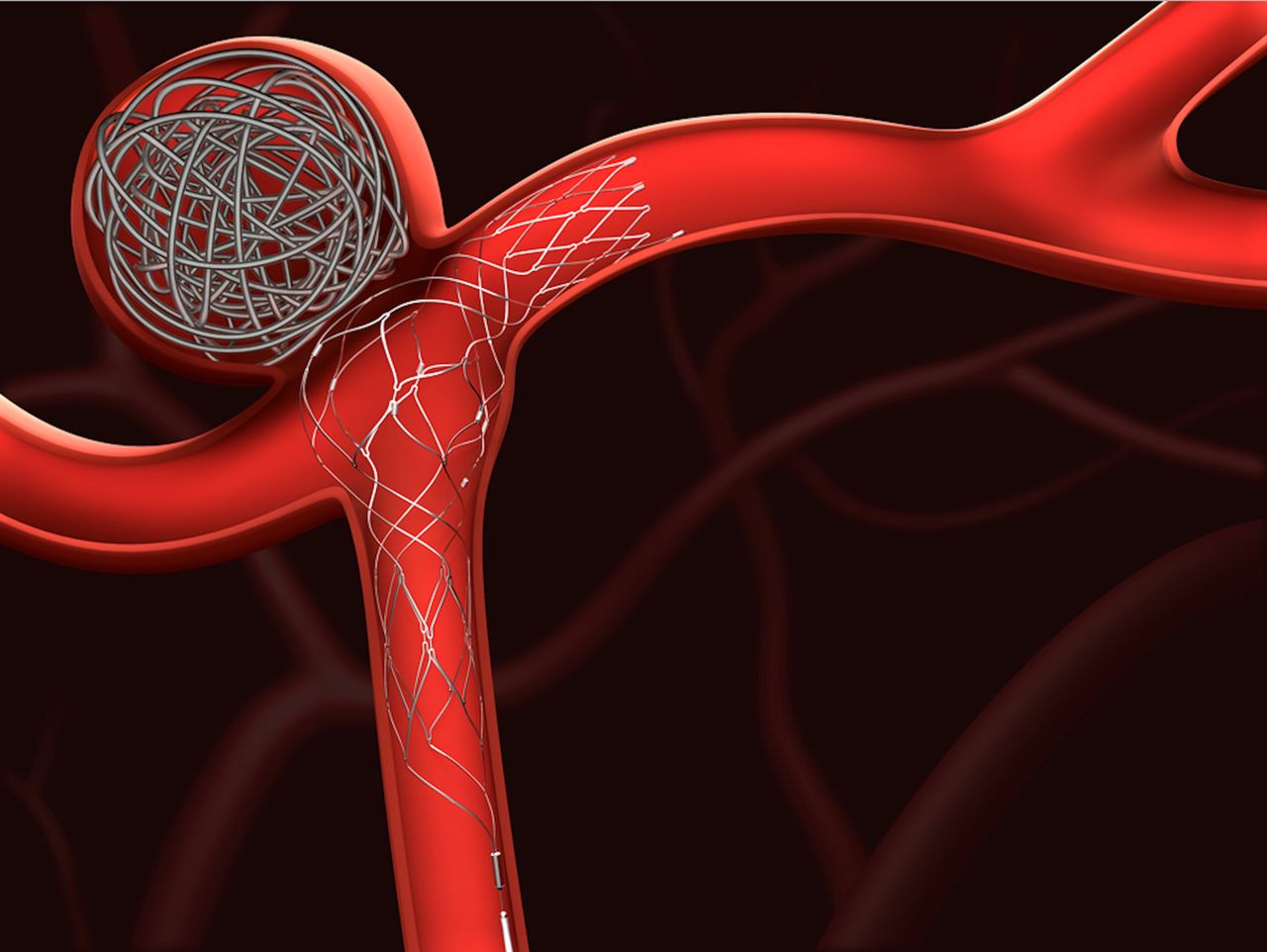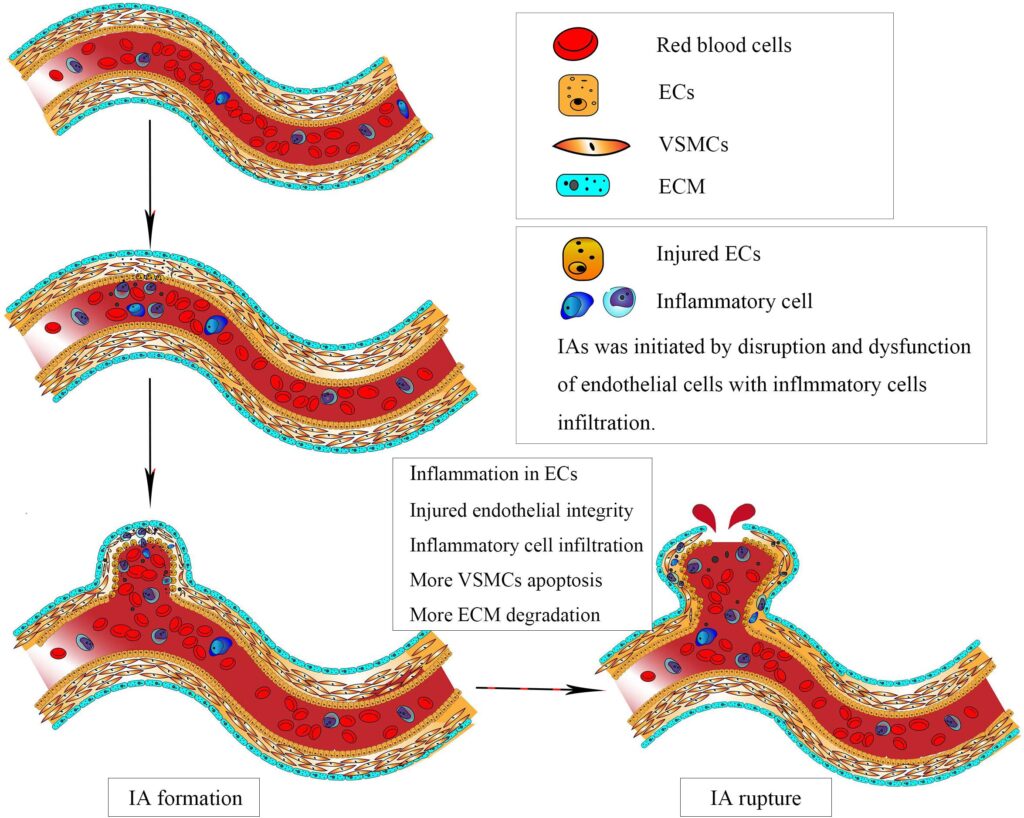A brain aneurysm, also known as a cerebral aneurysm, is a serious medical condition that requires immediate attention. For short, it is often referred to as a BA. This condition involves the weakening of a blood vessel in the brain, which can lead to a bulge or ballooning. If left untreated, it may rupture, causing life-threatening complications. In this article, we will explore what a brain aneurysm is, its causes, symptoms, and available treatment options.

What Is a Brain Aneurysm?
A brain aneurysm occurs when a weak area in the wall of a blood vessel in the brain begins to swell or balloon out. These weakened areas are prone to bursting, leading to bleeding in the brain, which is known as a hemorrhagic stroke. The size of an aneurysm can vary, ranging from a few millimeters to several centimeters. While some aneurysms remain stable and do not cause harm, others can grow over time, increasing the risk of rupture.
There are three main types of brain aneurysms:
- Berry Aneurysm: This is the most common type, often found at the base of the brain. It looks like a berry on a stem and is usually caused by a congenital weakness in the blood vessel wall.
- Fusiform Aneurysm: This type involves the entire circumference of the blood vessel and is less common than berry aneurysms.
- Mycotic Aneurysm: These are caused by infections that weaken the walls of blood vessels, leading to aneurysm formation.
Causes of Brain Aneurysms
The exact cause of brain aneurysms is not always clear, but certain factors can contribute to their development. Some of these factors include:
Genetic Factors
Some people are born with inherited conditions that make them more susceptible to developing brain aneurysms. These conditions include:
- Ehlers-Danlos syndrome, which affects connective tissue and makes blood vessels more fragile.
- Polycystic kidney disease, which leads to the formation of cysts in the kidneys and increases the risk of aneurysms.
- Marfan syndrome, a disorder that affects the body’s connective tissue and can weaken blood vessels.
Lifestyle Factors
Certain lifestyle choices can increase the likelihood of developing a brain aneurysm. These include:
- Smoking, which damages blood vessels and weakens their walls.
- Excessive alcohol consumption, which can raise blood pressure and strain blood vessels.
- Poor diet and lack of exercise, which can contribute to high blood pressure and other cardiovascular issues.
Medical Conditions
Several medical conditions can also predispose individuals to brain aneurysms. These include:
- High blood pressure, which puts extra stress on blood vessel walls.
- Atherosclerosis, a condition where plaque builds up inside arteries, making them narrower and weaker.
- Head injuries, which can damage blood vessels and create weak spots.
Symptoms of a Brain Aneurysm
Many brain aneurysms do not cause any symptoms and are only discovered during tests for other conditions. However, if an aneurysm grows large enough or ruptures, it can produce noticeable symptoms. These symptoms vary depending on whether the aneurysm has ruptured or not.
Symptoms of an Unruptured Aneurysm
An unruptured brain aneurysm may press on nearby nerves or tissues, causing symptoms such as:
- Pain above or behind one eye.
- Dilated pupil in one eye.
- Blurred or double vision.
- Numbness or weakness on one side of the face.
Symptoms of a Ruptured Aneurysm
If a brain aneurysm ruptures, it can lead to a sudden and severe headache, often described as the “worst headache of your life.” Other symptoms of a ruptured aneurysm include:
- Nausea and vomiting.
- Stiff neck.
- Sensitivity to light.
- Seizures.
- Loss of consciousness.
Treatment Options for Brain Aneurysms
Treatment for a brain aneurysm depends on several factors, including its size, location, and whether it has ruptured. The goal of treatment is to prevent the aneurysm from rupturing or, if it has already ruptured, to stop further bleeding and manage complications.
Observation and Monitoring
For small, unruptured aneurysms that are not causing symptoms, doctors may recommend regular monitoring instead of immediate treatment. This involves periodic imaging tests, such as magnetic resonance imaging or computed tomography scans, to check for changes in the size or shape of the aneurysm.
Surgical Clipping
Surgical clipping is a procedure used to treat both ruptured and unruptured aneurysms. During this surgery, a neurosurgeon removes a section of the skull to access the affected blood vessel. A tiny metal clip is then placed at the base of the aneurysm to stop blood flow into it, reducing the risk of rupture.
Endovascular Coiling
Endovascular coiling is a minimally invasive procedure used to treat brain aneurysms. A catheter is inserted into a blood vessel, usually in the groin, and guided to the site of the aneurysm. Tiny platinum coils are then inserted into the aneurysm to block blood flow and promote clotting, which helps seal off the aneurysm.
Flow Diversion
Flow diversion is a newer technique used for treating large or complex aneurysms. A special device called a flow diverter is placed in the parent blood vessel to redirect blood flow away from the aneurysm. Over time, this reduces the pressure on the aneurysm and allows it to heal.
Medications
In cases where surgery is not an option, medications may be prescribed to manage symptoms and reduce the risk of complications. These include:
- Pain relievers to manage headaches.
- Calcium channel blockers to prevent spasms in blood vessels.
- Anti-seizure medications to control seizures.
Recovery and Rehabilitation
Recovery from a brain aneurysm, especially if it has ruptured, can be a long and challenging process. Patients may require rehabilitation to regain lost abilities and improve their quality of life. Rehabilitation programs often include:
- Physical therapy to restore movement and strength.
- Occupational therapy to help patients relearn daily activities.
- Speech therapy to address difficulties with communication.
Emotional support is also crucial during recovery. Many patients experience anxiety, depression, or post-traumatic stress after surviving a ruptured aneurysm. Counseling and support groups can provide valuable assistance during this time.
Preventing Brain Aneurysms
While not all brain aneurysms can be prevented, certain steps can reduce the risk of developing one or experiencing a rupture. These include:
- Managing high blood pressure through a healthy diet, regular exercise, and medication if necessary.
- Avoiding smoking and excessive alcohol consumption.
- Treating underlying medical conditions, such as atherosclerosis or connective tissue disorders.
- Undergoing regular medical check-ups to monitor overall health.





